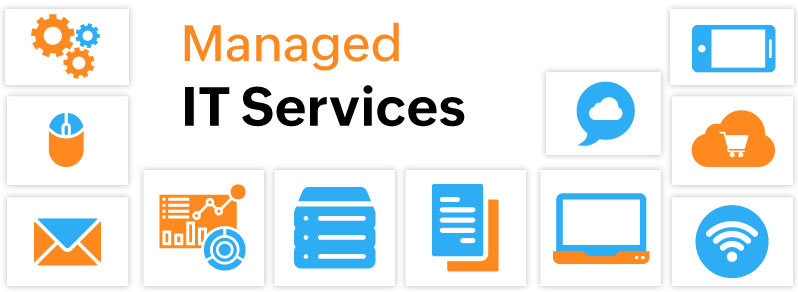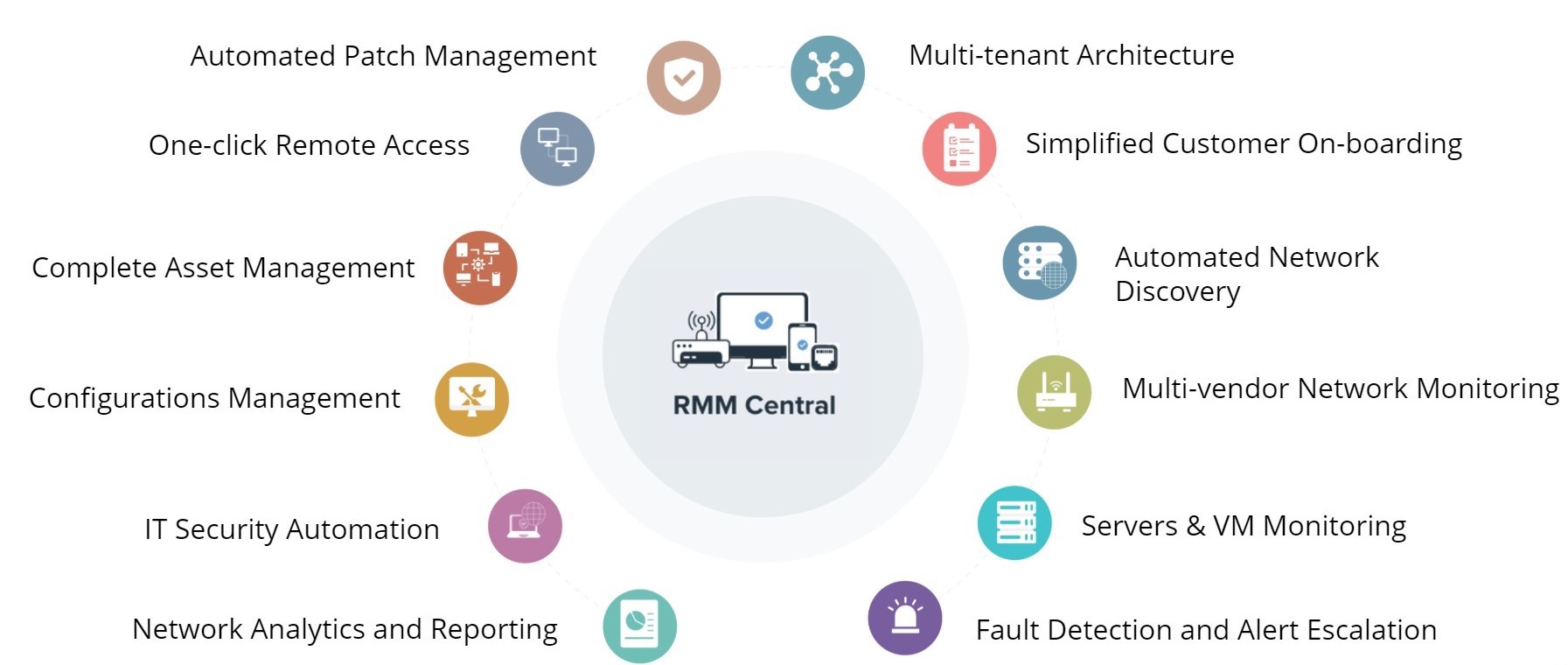A recent survey of IT professionals found that 59% of organizations have adopted managed service provider (MSP) services to oversee and monitor their network infrastructure. A quick glance at the MSP sector prompts the basic question: why do organizations outsource/require Managed IT Services and what is the role of MSPs in this process.
Any organization requires a team of IT experts to manage their network and secure their devices and network from any cyber-threats. To trim down costs associated with IT network maintenance and to receive better IT support for network issues when they arise, organizations opt for Managed IT services. Simply put, Managed IT services enable organizations to outsource IT tasks to a vendor on a contract or subscription based service. These services help in reducing the workload of in-house teams, supplement teams that are unable to meet IT demand, or to replace in-house teams.
Managed IT Services refer to the management and maintenance of multiple organizations' networks and devices by third-party vendors, who are also known as Managed Service Providers (MSPs). The main reason why organizations rely on MSPs to provide such services is to benefit from their advanced technical expertise in network maintenance through a cost-effective approach.
The evolution of managed IT services over the past decades underscores the intricate relationship between technological advancement and the dynamic needs of businesses. Emergent from an era in which companies solely maintained their IT frameworks in-house, grappling with the complexities of system maintenance, troubleshooting, and upgrades, the concept of managed IT services emerged as a strategic imperative.
The origins of this evolution can be traced back to the latter half of the 20th century, when enterprises commenced the practice of entrusting specific IT functions to external providers. This calculated approach to outsourcing enabled businesses to delegate routine IT management tasks - encompassing hardware maintenance, security reinforcement, software enhancements, and end-user support - to specialized third-party entities. This paradigm shift not only allowed companies to realign their focus towards core objectives but also empowered proficient IT partners to shoulder the onus of ensuring uninterrupted technology operations.
Advancing technology further paved the way for the expansion of managed IT services, accommodating transformative trends such as cloud computing and the pervasive influence of the internet. The gamut of services expanded to encompass remote monitoring, meticulous disaster recovery planning, robust cybersecurity protocols, and seamless data backup solutions. This evolutionary trajectory has culminated in the contemporary landscape, wherein managed IT services have evolved into an indispensable pillar of modern business strategy. By providing enterprises access to cutting-edge technologies without the encumbrances of comprehensive in-house management, this paradigm has redefined operational efficacy.
Within the domain of managed IT services, a cornerstone of the professional relationship between service providers and clients is encapsulated within the Service Level Agreement (SLA). This contractual framework assumes a paramount role in delineating the precise contours of performance expectations, mutual responsibilities, and stringent quality benchmarks that both parties solemnly undertake to uphold. The SLA serves as an instrument through which comprehensive terms are meticulously defined, spanning critical aspects including responsiveness, expeditious issue resolution, uptime assurances, and escalation protocols. By virtue of the SLA, a structure of transparency and accountability is meticulously cultivated, as quantifiable criteria are explicitly outlined to gauge the service provider's performance, while concurrently articulating the client's obligations and requisites. This meticulously crafted accord not only furnishes a strategic roadmap for the seamless provision of managed IT services but also forges an enduring partnership founded upon shared comprehension and an unwavering dedication to the pursuit of operational distinction.

Organizations today are under significant pressure to meet the performance, operational and security needs of the business. Also, other factors for choosing to opt for managed IT services include:
Managed IT services are synonymous with Managed service providers (MSPs). MSPs take a proactive approach to maintaining their clients' IT organizations against all management and security issues. MSPs provide 360-degree managed IT services by ensuring 24/7/ coverage of IT duties and can contribute specialty knowledge or expertise that may not otherwise be available.
MSPs provide managed IT services for small, medium and large companies alike as a subscription based service. For a monthly or annual plan, a high level of service quality is provided to business. Managed IT services can encompass many responsibilities but it typically includes:
Managed IT services go beyond break-fix models by actively working to mitigate any risk of downtime, and in case of downtime, how to get the enterprise’s IT service up and running. Managed IT services offer enterprises services like managing user accounts, securing endpoints, maintaining servers and networking devices, backup and recovery services, data backup, and more. They assist customers in their IT needs and remove the need for an in-house IT team.
There are numerous benefits that organizations can gain from the right managed IT service provider. These benefits often include:
RMM Central is the one-stop solution that helps MSPs gain in-depth visibility into client networks from a single console. A unified remote monitoring and management tool is a must-have for MSPs to maintain a distinguished level of managed IT service in managing client devices. RMM Central helps MSPs simplify the management of every traditional and modern device and provide excellent managed IT service.

RMM Central's product roadmap has tight integrations with our home grown PSA ITSM software, ServiceDesk Plus MSP and also with other 3rd party IITSM applications like Zendesk, Jira, Spiceworks and FreshService.
Try the free, 30-day trial of RMM Central to experience the features offered.